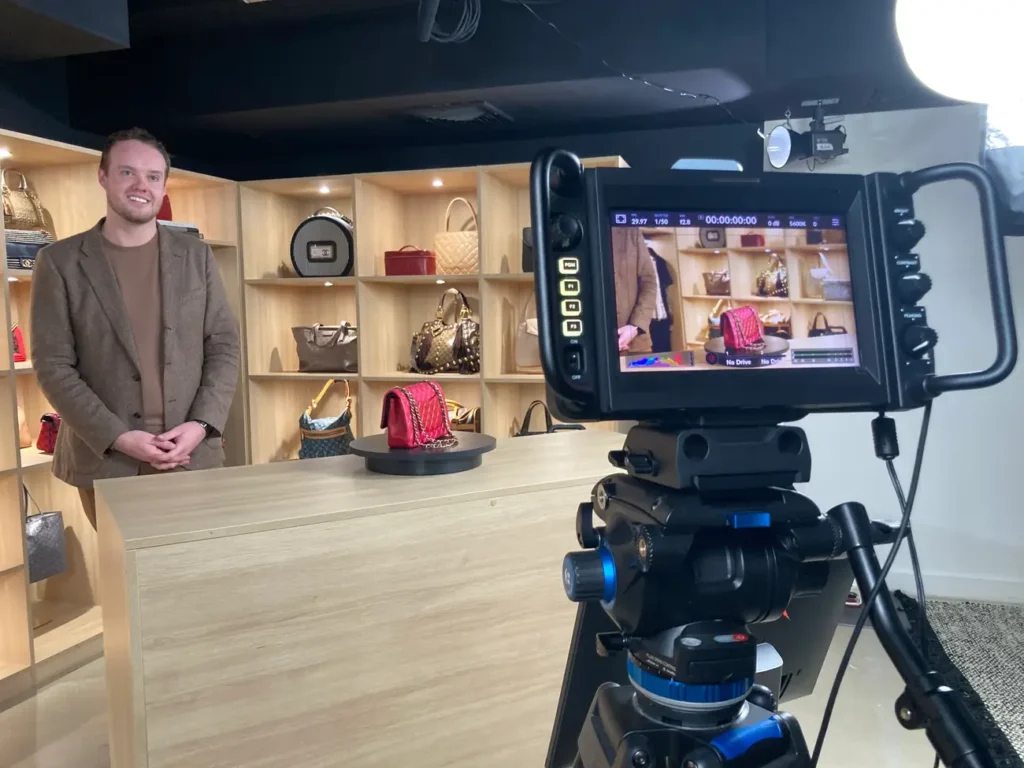TikTok is hell-bent on growing Shop, but its viral spurts could be hiding a key weakness

TikTok is all-in on shopping. One in three US job openings at the company are for e-commerce roles, per its hiring portal. It’s still offering big discounts for first-time buyers, nearly a year after its commerce feature, Shop, launched. And it’s enlisting influencers, live sellers, and others to boost sales.
The company appears hell-bent on making shopping take off. And yet the feature, which lets users buy products like curling irons and battery packs via videos, livestreams, and a dedicated commerce tab, is pissing off some users who lament TikTok’s pivot from a dance-and-comedy video app to a shopping mall.
Luckily for TikTok, Shop’s intrusion isn’t driving users away. But the questions remain: Should TikTok bet its future on shopping, and will it make enough money from Shop to justify its overbearing presence in the app?
From conversations with e-commerce analysts, TikTok Shop partners, sellers, and creators, it’s clear that Shop is growing steadily in the US and driving meaningful sales for some brands. But third-party data and testimonies from Shop partners show a mixed picture of its first six months of the year. It is by no means a runaway success.
First, the good news: Shoppers are spending more on TikTok than they did at the start of the year. On average, US users who made TikTok Shop purchases spent about $67 between mid-June and mid-July, compared to around $54 over a four-week period in January, per data from Earnest Analytics, a research firm that tracks credit-and-debit-card transactions.
Another bright spot for TikTok is user retention. Since launch, it’s had a higher average rate of repeat purchases than every major e-commerce platform except Amazon, per Earnest’s data. TikTok Shop is also showing strong momentum in regions outside the US that have embraced social shopping more, like Southeast Asia. Its future success in the US is not a foregone conclusion, however.
Order-tracking platform Route saw global order volume on TikTok Shop grow a modest 35% between January and June. Shein’s order volume jumped 63% over the same period, for comparison.
And TikTok’s app has some structural challenges it needs to overcome in order to become a competitive e-commerce player.
For one, product sales on TikTok often rely on viral videos from influencers, which are unpredictable. That makes the platform a tough sell for big brands that want to forecast potential revenue upfront. For small sellers that have made big bucks after going viral on a few videos, the good times haven’t necessarily lasted. That can be frustrating.
“It’s nearly impossible to stand out with an authentic brand story,” one seller, who saw a ton of sales through TikTok Shop last April during its beta period, told B-17. “It’s gotten really over-saturated.”
TikTok trends don’t guarantee sales on TikTok either. Users sometimes click away to buy products they see in a video elsewhere rather than checking out with TikTok’s shopping cart, Shop partners told B-17.
“It’s really not a platform for people who have the mentality of, ‘I’m going to come on here and go viral and make a ton of sales,'” said Nicole Rechtszaid, cofounder of social-commerce firm Ghost Agency, a TikTok Shop partner. “It’s for those brands who are more innovative, who are willing to pivot and adapt and try things and fail and then rebuild and use new features and grow from there.”
What’s working for TikTok Shop
Well-timed promotional campaigns and live selling have bolstered TikTok Shop’s growth this year, agency sources told B-17.
Its ongoing discounts for buyers and sellers help drive first-time sales and repeat purchases. And, in July, the company hosted a Deals for You Days promotion that overlapped with Amazon’s Prime Day event, leading to hundreds of thousands of video creations featuring its campaign hashtag. Beauty brands like L’Oréal Paris, Maybelline New York, and NYX Professional Makeup participated, a TikTok spokesperson told B-17.
Creators and sellers have also found success selling live, with Canvas Beauty’s Stormi Steele and streamer Mandys Pena each crossing $1 million in sales from livestreams in the past two months, the spokesperson said.
“The most exciting space for us right now and our clients has been live shopping,” Rechtszaid said. “We are at the point where every single week we’re getting about five to 10 different inbound requests from brands who are interested in starting TikTok Shop Live.”
Live shopping could be a massive opportunity for TikTok in the US if it follows the same trajectory as apps in Asia where buyers and influencers have embraced the format. TikTok’s sister app in China, Douyin, drove around $200 billion in sales in 2022, The Information reported. TikTok has enlisted a small army of third-party coaches to help creators improve their livestream performances.

TikTok Live has become an e-commerce hub for all types of sellers, including pre-owned luxury retailer What Goes Around Comes Around, which has a streaming studio in its store.
“TikTok is still very much prioritizing it, and the consumer is certainly starting to watch it,” even if those livestreaming videos aren’t popping up on your For You page, said Julian Reis, founder and CEO of the e-commerce firm and TikTok Shop partner SuperOrdinary.
Shop’s biggest obstacles ahead
While new formats like live shopping show promise and buyer retention has been strong this year, keeping sellers around (and attracting new, bigger brands) could prove to be TikTok’s biggest challenge going forward, industry sources told B-17.
Sales on TikTok often happen in viral spurts, similar to how non-shopping video trends occur on the app. These flashy moments can spike demand, but don’t guarantee longer-term revenue.
“Just because a product goes viral doesn’t mean the whole brand goes viral,” Reis said. “What we see is that that product will go viral and it could potentially sell millions of dollars and the rest of the brand is left behind.”
TikTok’s promotional discounts, which drive up sales, are also drawing criticism from some brands, Reis said.
“Brands may have complained pricing on TikTok is so low,” Reis said. “But what it’s done is created a new consumer behavior and that was intentional.”
Unsurprisingly, a potential US divestment or ban for TikTok also presents challenges for the company as it tries to draw in new buyers.
“We saw a lot of merchants sign up to start using TikTok Shop right when it launched, but we’ve seen the number of new merchants joining it go down,” Route CEO Michael Yamartino told B-17. “For a lot of them, knowing that it’s a channel that might go away is scary enough that they’re waiting and seeing.”
For smaller, more nimble brands, it can still be worth testing out Shop, even if TikTok’s future in the US remains uncertain. The upside of becoming a trendy product on the app can be life-changing for small businesses, even if that virality is fleeting.
But no one should bet on going viral as a business strategy.
“I still receive questions to this day about the ban,” Rechtszaid said. “We just recommend to all of our clients to use TikTok as a great brand-awareness generator and sales should be viewed as an incremental success for them.”






